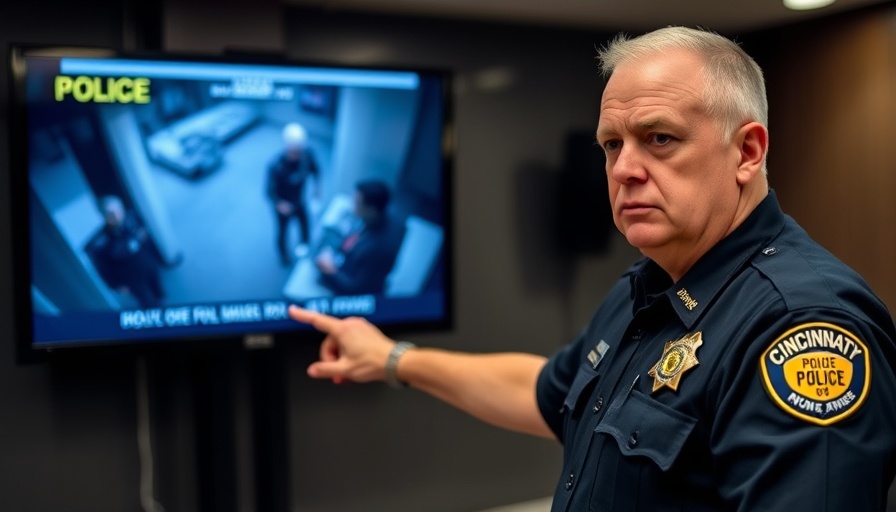
Understanding Transparency in Police Procedures Amidst Tragedy
In a bold demonstration of transparency, the Cincinnati Police Department (CPD) released body camera footage of the fatal shooting of 18-year-old Ryan Hinton merely hours after the incident. This decision, made by Police Chief Teresa Theetge, marks a notable shift in police protocol intended to foster trust between law enforcement and the community.
The Importance of Timely Disclosure
The rapid release of the footage reflects CPD's commitment to open communication in light of a critical event. Chief Theetge has stated that their policy allows for the disclosure of body camera footage within 24 hours following a police shooting. This initiative stems from a desire to provide accountability and clarity to the families involved and the wider community. “I think, like any family member, they were all distraught over what they just saw,” Theetge remarked during an interview, underscoring the emotional weight of the disclosure.
The Immediate Aftermath of the Shooting
The investigation into Hinton's death not only includes a review by CPD’s Homicide Unit but also involves the Hamilton County Prosecutor's Office and an internal police administration review. Furthermore, in recognition of community concerns and the need for impartial oversight, the Citizens Complaint Authority is also partaking in an inquiry into the shooting. This multi-faceted approach serves to alleviate public skepticism toward law enforcement operations.
An Emotional Reflection of Grief
As the family members viewed the footage, a visceral reaction ensued. Ryan Hinton's family grappling with the tragic loss, expressed their distress at seeing the footage of such a horrific event. Hinton's attorney, Michael Lewis, noted the immense impact the viewing had on the family, highlighting their emotional distress amidst their pursuit of justice. This scenario illustrates the human side of police work, wherein procedural actions intersect with profound personal loss.
Community Impact: A Step Towards Healing?
The events surrounding Ryan Hinton's shooting reignite discussions about police transparency, accountability, and community faith in law enforcement. The tragic incident occurred during a period of heightened scrutiny toward police practices nationwide, particularly in the wake of civil unrest and calls for reform. With Cincinnati's collaborative agreement aimed at improving relations between police and community members, this situation could serve as a pivotal point for dialogue and healing.
Future Predictions: The Road Ahead for Transparency
Looking forward, the approach taken by CPD may set a new standard for police departments across the nation. As communities demand more accountability and transparency in the wake of police-involved shootings, other cities might follow Cincinnati's lead. There’s hope that this trend will foster a more trusting relationship between law enforcement and the communities they serve, which could ultimately contribute to enhanced safety and community well-being.
Conclusion: The Importance of Advocacy and Dialogue
While the release of body camera footage may aid in transparency, it also amplifies the need for ongoing advocacy in addressing the systemic issues within police departments. The fallout from such tragedies often calls for rigorous discussions on policies and practices that underpin law enforcement. Continuous engagement between the community, law enforcement, and advocacy groups is essential to ensure justice and create a safer environment for all.
 Add Row
Add Row  Add
Add 




Write A Comment